In December, Mariam described our plans for a small display about the objects from the V&A’s Damascus Room. During the last month, we have been looking more closely at how we will prepare for display the decorated wooden panels that formed part of the room. Damascus interiors are to be found in at least 17 collections around the world, and diverse conservation projects have resulted in analysis of their construction and decorative techniques. Among the studies, several have been carried out by Dr Anke Scharrahs, from Dresden Museum, who has also written a wonderful book called Damascene ‘Ajami Rooms. The studies have allowed us to get a feel for what we would be looking at, prior to starting our assessment.
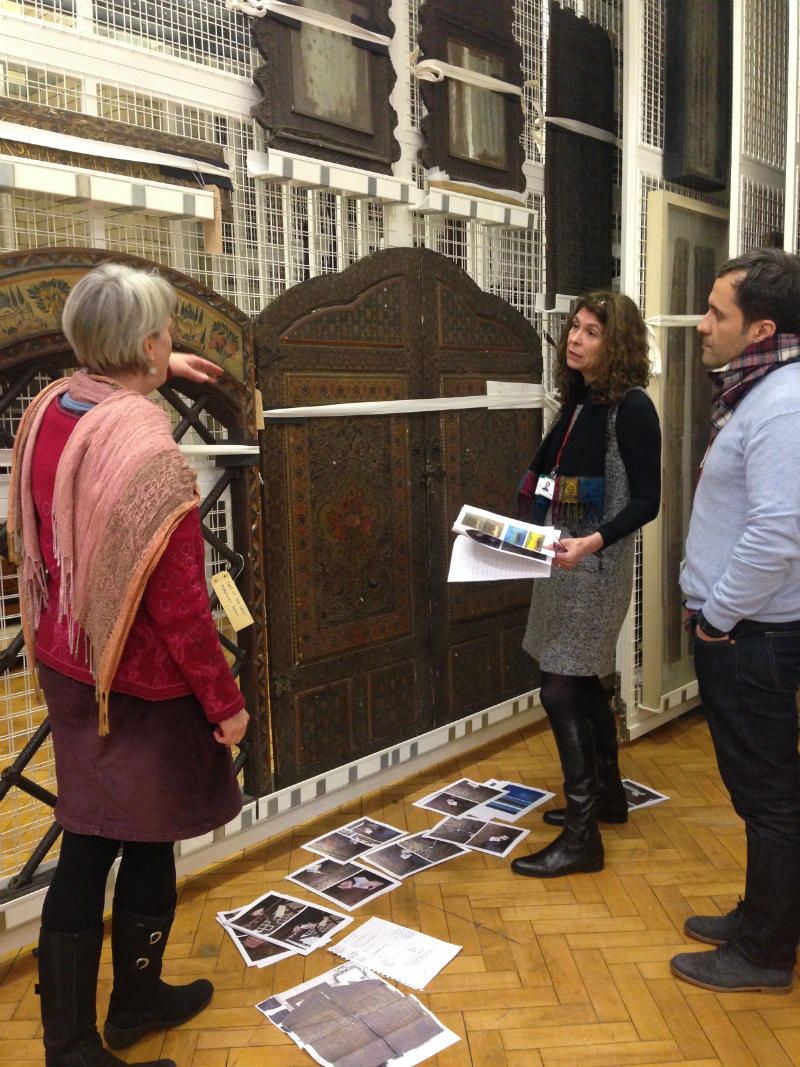
Having been kept ‘for record purposes’, the five panels have remained in storage since 1957. During that time they have gathered dust and the varnish has continued to darken. Our first step is to check the condition of the wood and look at the construction and the stability of each panel, noting losses, cracks and signs of movement. Next we examine the decorative layer visually, to build a picture of both the condition and also the structure of the layers.
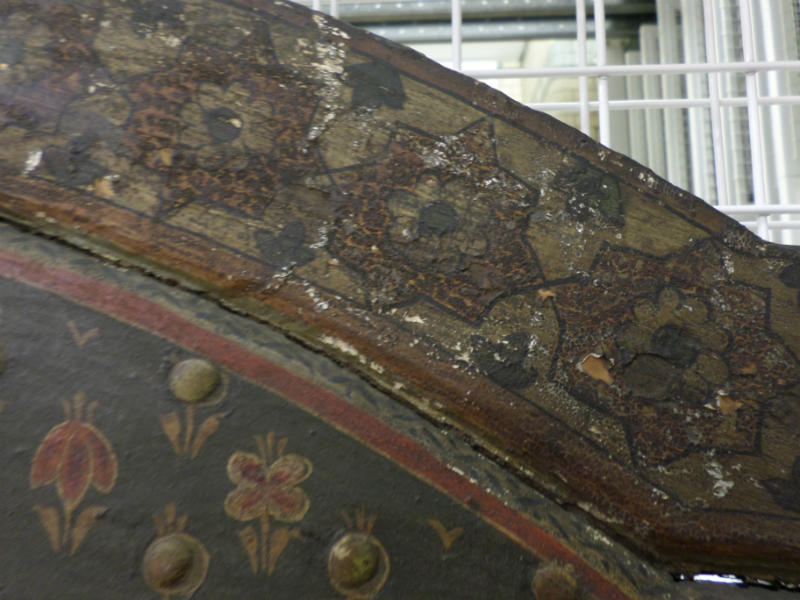
We have not undertaken any tests to identify the woods of our pieces, but poplar and cypress were typically used in Damascus, as was walnut for the windows. Although the current state of the panels gives an impression of the colour scheme, we know from the conservation of other rooms that the brown surface on our panels does not give the true colour balance of the original appearance. The decoration of the panels is comprised of matt painted areas with floral motifs of delicate colours, flower vases and small landscape scenes, combined with borders and backgrounds of metal leaf and a variety of coloured glazes of natural resin. The richness of the decoration is enhanced by areas of ‘pastiglia’ (called ‘ajami in Arabic), made by trailing a thick paste of ground gypsum and animal glue into raised patterns of leafwork and scrolls. The lettering is also made in this way. All areas of pastiglia are covered with metal leaf and glazes and these techniques combine to create a play of glittering and smooth, shining and matt surfaces. All of this is currently muted by the discoloured varnish and layers of dirt. Detecting what is original and what was applied later allows us to make decisions about the treatment that will be carried out.
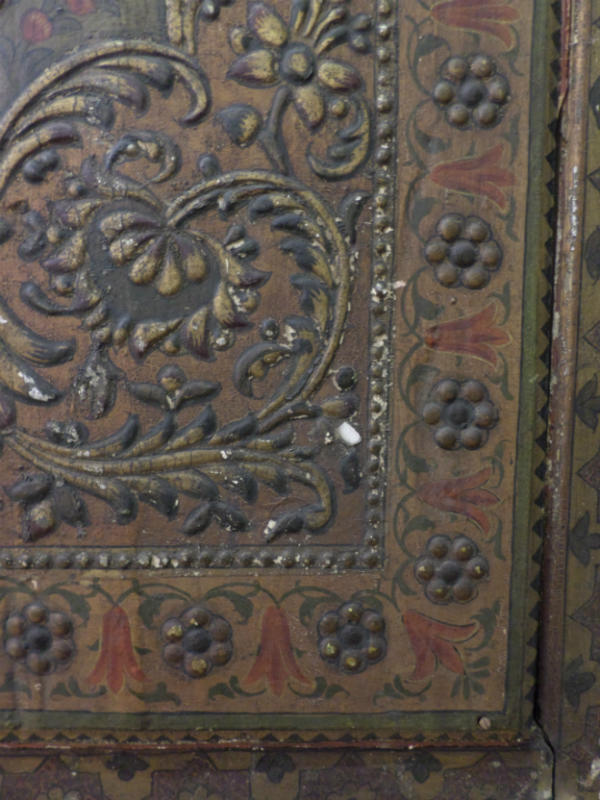
As well as visual observation, we have used other approaches to help us understand the surface, such as solvent tests and optical microscopy. To clean the surface, we need to find out what will lift the dirt without dissolving the paint or glazes beneath. Small cleaning tests were carried out. These help us decide how far to clean and which method will be the best. The variety of materials present means that we may need to use different cleaning agents in different areas. Having gained a sense of how to clean the dirt off, we then applied some small areas of solvent to the discoloured varnish, to see whether it could be separated from the glazes beneath.
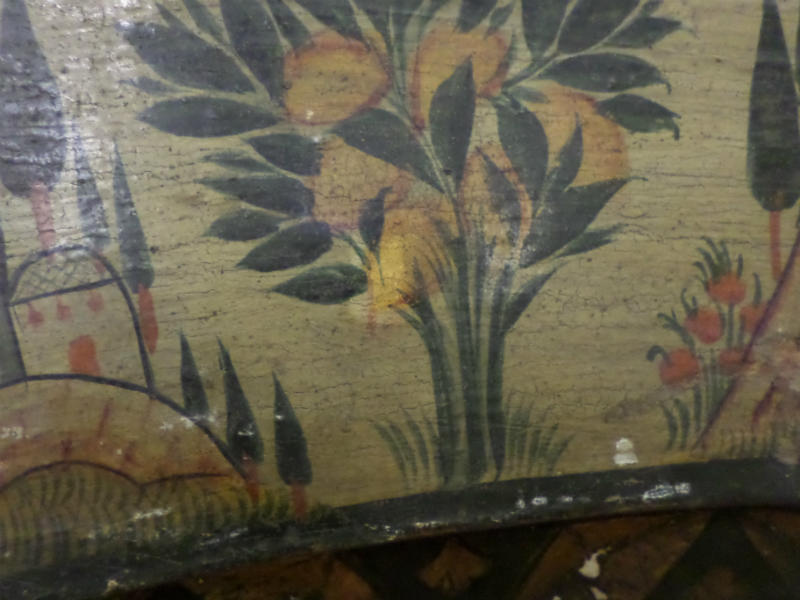
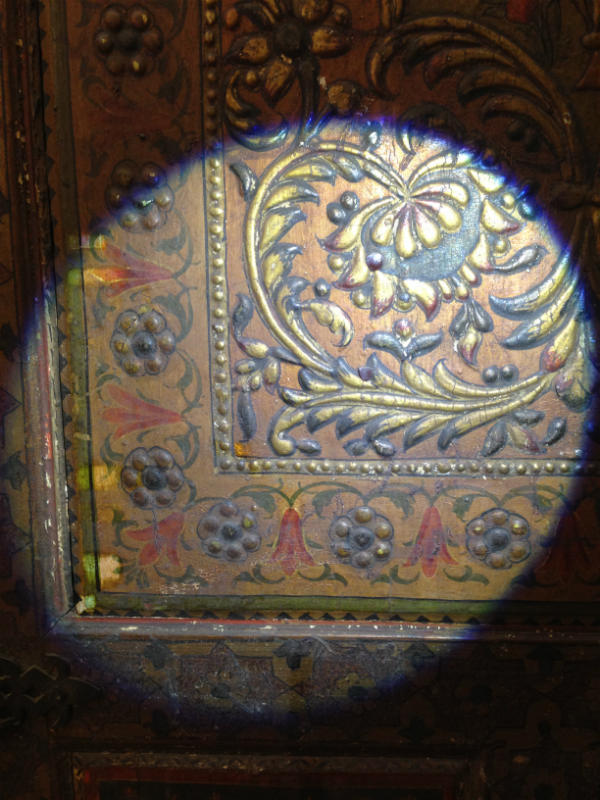
It is important to be sure the solvent will not affect the resins of the glazes beneath, and to help us with that, we use optical microscopy. Tiny samples have been taken from the break edges in the metal leaf.
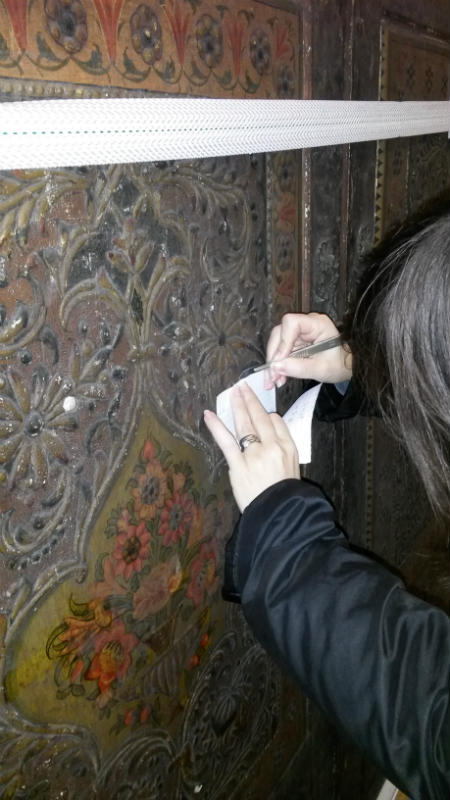
These samples are embedded in resin and then a cross-section is examined at high level magnification. This helps us understand the boundaries between the different layers, the complex structure of the original paint layer and how many later layers there are. We have been trying to see whether the later applications of varnish have become merged with the original glazes – if the non-original varnish can be seen as a separate layer, we know we have a greater chance of being able to consider removing it to reveal the glowing glazes beneath. We are looking forward to collaborating soon with others on the further investigation of the glazes.
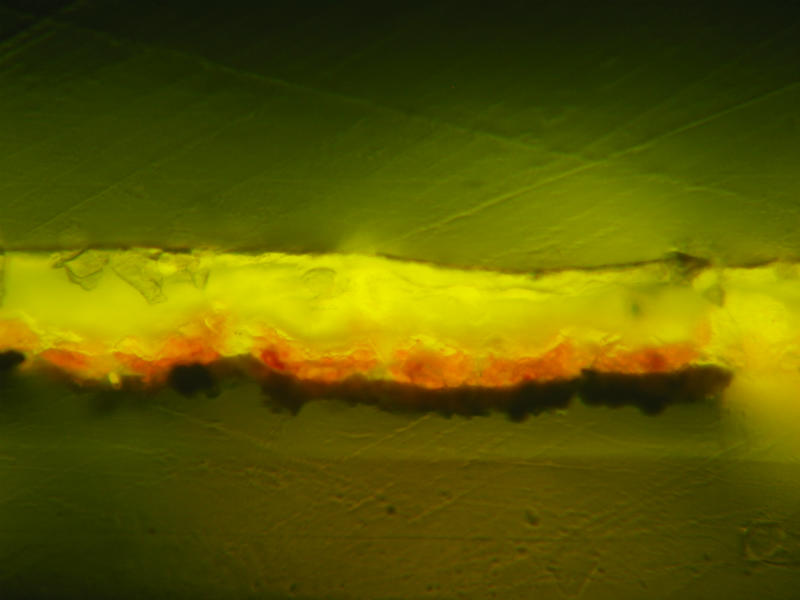
The ageing of the materials has the effect of causing the paint and metal leaf to lift or curl away from the wooden background. Although there are a few areas where this has happened, we are happy to see that large parts of the decoration remain stable. The most disrupted areas of the metal leaf are in the carved border of the window, and the flat metal decoration around the calligraphy panel. These lifting areas will need to be consolidated before we can start cleaning or removing varnish, so our next task is to test different areas with weak solutions of glues, to find which ones best suit the different materials.
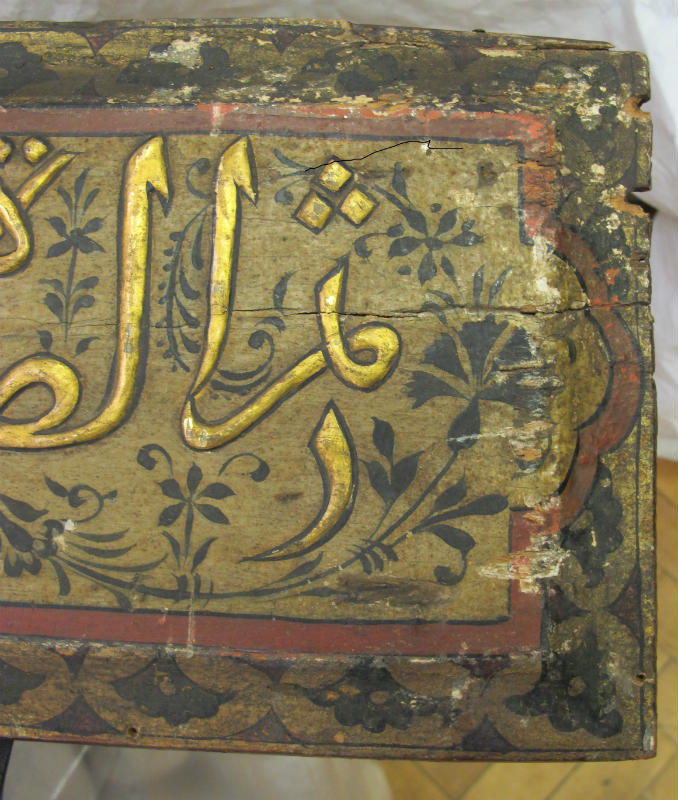
Once we have consolidated the surface, and cleaned the superficial dirt, we will select an area to reveal a larger section of the original decoration. The effect will be a dramatic and will highlight just how beautiful these interiors were.
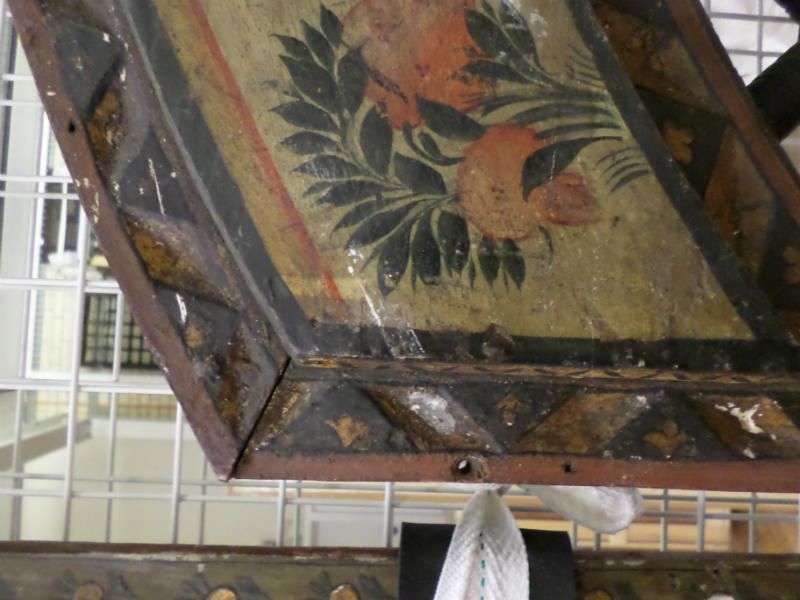


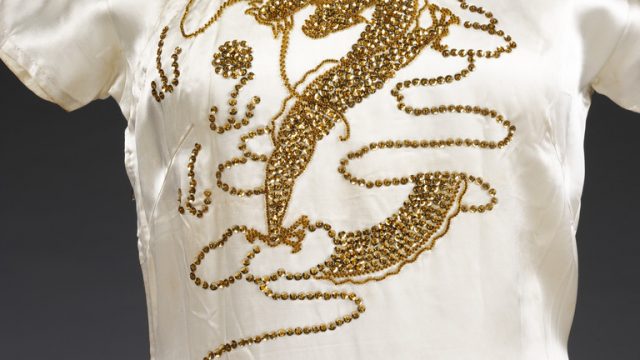
Very informative and helpful insight – thank you.
Conservator from Cape Town, SOuth Africa